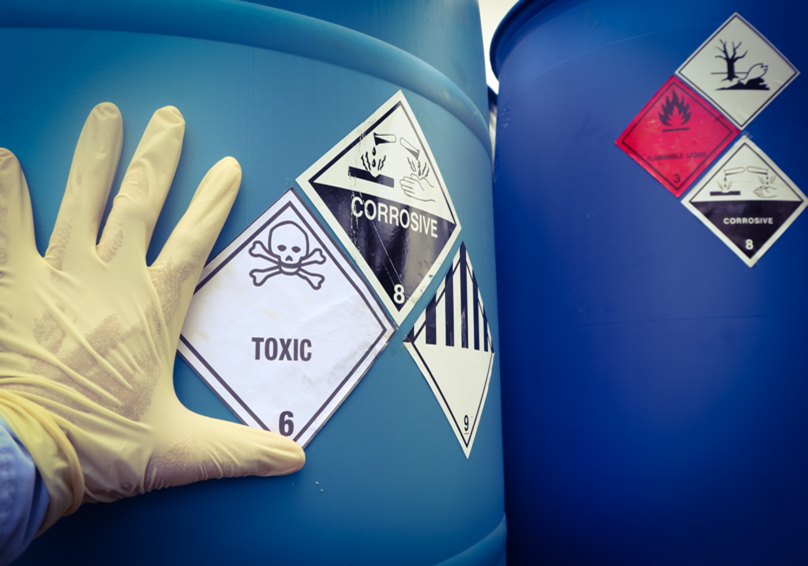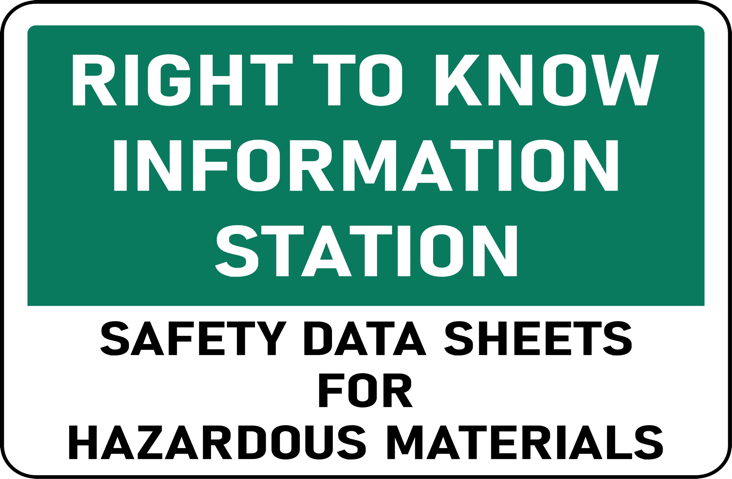Mastering Safety Data Sheets: Ensuring Workplace Safety and Compliance
Oct 2nd 2025

Safety Data Sheets: A SkyGeek How-To Guide
Handling Hazardous Substances
If you're already familiar with Material Safety Data Sheets, the easier-to-decipher regulations That led in 2015 to their streamlined replacement -Safety Data Sheets - are a welcome update to older MSDS hazardous substance handling documents.
The goal is to protect you from dangerous substances at the workplace, whether it's a manufacturing site or an aircraft hangar.
Understanding the 16 different sections of a safety data sheet will help keep your crew and worksite safe when in the vicinity of potentially dangerous chemicals and other hazards.
With our SkyGeek guide to navigating Safety Data Sheets, you will learn why it's important to have an SDS on hand for every potentially hazardous substance or situation - and how to use them at your workplace.
SkyGeek has provided aircraft safety tools, equipment and supplies for more than 40 years, with first-hand experience of the evolution of Material Safety Data Sheet (MSDS) documents to SDS documents. We answer commonly asked questions in this free safety data sheet guide and FAQ, which we encourage you to share with co-workers and contractors.

The Importance of Safety Data Sheets
Safety Data Sheets, formerly known as Material Safety Data Sheets, are standardized documents that provide critical information about hazardous substances.
These documents detail potential hazards associated with a product, its composition and the recommended safety precautions when handling, storing or disposing of it.
An aviation safety data sheet (SDS) is used in aviation, manufacturing, chemical and chemical processing workplaces to ensure employee safety, while protecting the public and the environment. The federal Occupational Safety and Health Administration (OSHA) requires makers of hazardous products or chemicals to provide this document to end users. It's up to the manufacturer to include one with non-hazardous materials.
A Safety Data Sheet provides information on the potential risks associated with a substance or product. The SDS informs workers on the appropriate handling, storage and disposal of hazardous materials.
Having an SDS on the premises helps emergency responders during accidents or spills involving hazardous substances. Work sites use SDS documents to maintain a safe working environment while complying with safety regulations.
The 16 Sections on an SDS
A Safety Data Sheet typically consists of 16 sections. They are:
1. Product and Company Identification: This section includes the product name, its manufacturer and contact information. It's crucial for identifying the substance and knowing who to contact for additional information.
2. Hazards Identification: In this section, the specific hazards of the substance are listed, including its classification, signal words, hazard statements and precautionary statements. This information helps workers and emergency responders understand risks and necessary precautions to avoid those risks.
3. Composition/Information on Ingredient: This section lists the chemical ingredients of the substance, their concentrations and any applicable regulatory information. It helps users understand the substance's composition and potential risks posed by its individual components.
4. First-Aid Measures: This section outlines the recommended first-aid actions to take in case of exposure to the substance. It covers inhalation, skin contact, eye contact and ingestion. Prompt first-aid responses can minimize harm in case of accidental exposure.
5. Firefighting Measures: In this section, you'll find information on suitable extinguishing methods, specific hazards related to the substance during a fire and any protective equipment needed for firefighters. This information is vital for emergency responders dealing with fires involving hazardous substances.
6. Accidental Release Measures: Appropriate steps to take in case of an accidental spill, leak or release of the substance are outlined in this SDS section. It includes advice on containment, cleanup methods and any necessary personal protective equipment (PPE). Following these guidelines helps minimize environmental and health risks in case of accidents.
7. Handling and Storage: This part of the MSDS provides guidelines for safely handling and storing a hazardous substance. It covers precautions for safe handling, conditions for safe storage and any incompatibilities with other materials. Adhering to these guidelines ensures the safe use and storage of hazardous substances.
8. Exposure Controls/Personal Protection: This section details the recommended exposure limits, engineering controls and PPE to minimize exposure to the substance. Employers and job site supervisors rely on this section to implement proper controls and to equip workers with the necessary protective gear to reduce health risks.
9. Physical and Chemical Properties. The substance's physical and chemical properties are listed in this section. The properties can include appearance, odor, boiling point and flashpoint. This information helps users identify the material and understand its characteristics.
10. Stability and Reactivity: This section describes the substance's stability and potential hazardous reactions. Understanding these factors helps users avoid conditions or situations that could lead to dangerous reactions.
11. Toxicology: This part of the SDS provides information on the substance's potential health effects and its toxicological properties. It may include data on acute and chronic toxicity, carcinogenic effects and ill effects on human reproductive systems. This information is crucial for understanding the substance's potential health hazards.
12. Environmental Impact: Read this section to learn about the substance's potentially harmful effect on the environment. This section details issues such as toxicity to aquatic life and the potential for accumulated risk factors over time. It helps organizations assess their environmental responsibilities and take necessary precautions.
13. Disposal Guidelines: An SDS must include guidelines for the proper disposal of the substance and any contaminated materials. These instructions help ensure compliance with environmental regulations.
14. Substance Transport Information: This section provides information on transporting the substance, including any special precautions or regulatory requirements. This is must-know information for businesses or governments that transport hazardous materials.
15. Regulatory Information: This section lists government regulations and standards for the substance. Here, you'll read OSHA regulations set by the U.S. government and international Globally Harmonized System (GHS) classifications for hazardous materials.
16. Regulatory Updates: Find information about when this SDS was produced and last revised in this section. While an SDS must be reviewed every five years, a company can update its SDS when new information or standards become available.

Workplace Responsibilities
Employers are responsible for providing a safety data sheet (SDS) for every hazardous substance in the workplace.
Workers should be trained how to access, read and understand these documents. This training is critical for maintaining a safe working environment and complying with applicable regulations.
Employers and supervisors can maintain safety equipment and supplies that help them safely handle hazardous materials and prevent accidents. For example, leak detectors can be available at aircraft hangars, manufacturing facilities and other work sites.
To effectively read and understand an MSDS, follow these steps:
- Familiarize yourself with the structure and layout of the document.
- Pay close attention to sections most relevant to your role, such as handling and storage, exposure controls, or first-aid measures.
- Keep a copy of the MSDS readily accessible for quick reference in emergencies.
- Consult the MSDS when using a new substance or unsure about specific safety precautions.
A SkyGeek FAQ for Safety Data Sheets
What is the primary purpose of an SDS?
The primary purpose of a safety data sheet (SDS) (formerly known as an MSDS) is to provide information on the potential hazards of a substance and the recommended safety precautions for handling, storing and disposing of it.
Are Safety Data Sheets required by law?
Yes, SDS documents are required by law in many countries, including the United States, European Union and Canada. In the U.S., OSHA provides over SDS regulations and enforcement. Employers are responsible for providing MSDS for all hazardous substances in the workplace and ensuring that workers have access to them.
How often should an SDS be updated?
An SDS should be updated whenever there is a significant change in the substance's composition or new information about its hazards becomes available. Manufacturers are required to review SDS documents every five years. Manufacturers and distributors can update SDS documents whenever new information or rules are available.
Who is responsible for creating the SDS?
Manufacturers, importers and distributors of hazardous substances are responsible for creating SDS documents. They must ensure that the information provided is accurate, up-to-date and complies with applicable regulations.
What is the difference between an SDS and an MSDS?
Although you'll sometimes hear the two terms used interchangeably, the MSDS (Material Safety Data Sheet) is the old version of the SDS (Safety Data Sheet). The SDS was adopted in the U.S. in 2015 to embrace an easier-to-understand format. The SDS follows the Globally Harmonized System (GHS) of Classification and Labeling of Chemicals with a standardized 16-section format. This 16-section format makes it easier to understand and use across different countries. Ask for the updated SDS document if you see an old MSDS document at your work site.
Language and Accessibility Requirements for Safety Data Sheets
Every safety data sheet must be written in English to comply with OSHA standards, regardless of where the product originates. This requirement ensures that all workers in U.S. workplaces can understand the potential hazards and safety precautions for each material. However, many manufacturers also include additional translations in other languages to support global operations and multilingual teams. Providing SDS documents in multiple languages improves accessibility and helps maintain compliance in diverse workplaces.
Who Creates and Distributes Safety Data Sheets?
It is the responsibility of manufacturers, importers, and shippers to create and provide an accurate safety data sheet (SDS) for every hazardous substance. These documents must accompany products when they are packaged and shipped so that workers and employers have immediate access to essential safety information. By law, an SDS must include all required details about chemical composition, hazards, and safe handling procedures. Distributors are also required to maintain updated versions, ensuring that end users always have the most current information.
